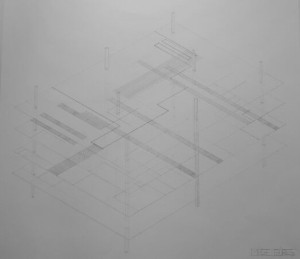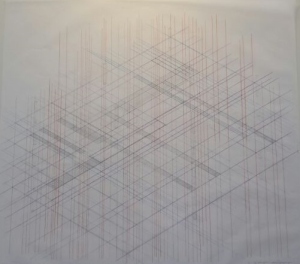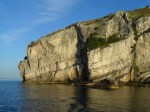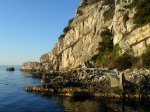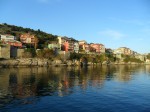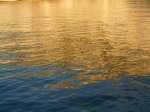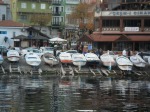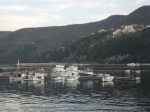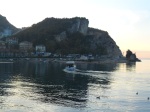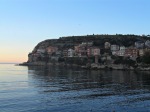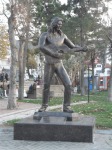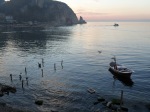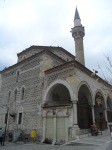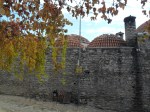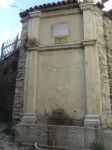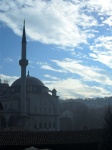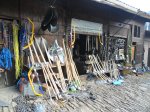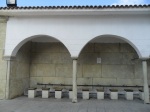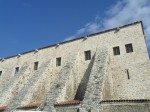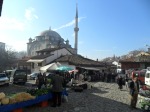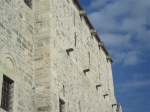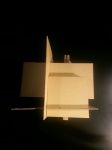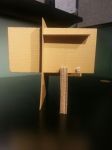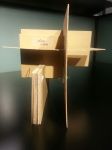After we had drawn axonometric drawings , we put the tracing papers on the drawings and drew all the regulating lines even which are invisible. So we can see all the lines which help us to create new relations while composing 3D grids.
Month: November 2013
First trial of dissolving
Quick Impression Drawing Session
This week , we draw photos which we’re shown , onto corrugated cartboard by using craft knife.
Axonometric Drawing of “Superpose – Superimpose – Explode”
Amasra
Safranbolu
“THE CITY IMAGE AND ITS ELEMENTS” – ANKARA
This week, we are expected to read the article of Kevin Lynch about city images and find examples of 5 elements which he classified the city image , from our daily city Ankara.
The 5 elements of the city images are;
-Paths
-Edges
-Districts
-Nodes
-Landmarks
1.Paths:
Paths may be streets, walkways, transit lines , canals, railroads which the observer customarily, occasionally or potentially moves. Atatürk Bulvarı is one of the good examples of paths in Ankara. People observe the center of city easily while moving through it.
2.Edges:
According to the text, edges are the linear elements not used or considered as paths by the observer. They are the boundaries between two regions in the city. Ankara Kalesi is an example of edges in terms of seperating regions. It is made up stone walls in order to protect the city, in the past. Recently, there is no function of it but it attracts tourists.
3.Districts:
According to the writer ; districts are recognizable as having some common , itentifying character and observer should menteally enter “inside of”. Hamamönü is an example for this explanation, because it has a different compared to general character of Ankara. It reflects style of Ankara’s old houses and its always identifiable from the inside and also from the outside.
4.Nodes:
Atatürk Bulvarı is a good example of nodes. It is a strategic place in term of transportation and intersection of paths.
5.Landmarks:
Landmark of Ankara is Anıtkabir.
Reading:
Lynch, Kevin. “The City Image and its Elements” Image of the City. Cambridge and London: The MIT Press, 1960. pp. 46-90.
QUICK IMPRESSION DRAWING SESSION
Sketch Problem 2: 5 Planes and Wire
We have applied just given actions;
– copy
– extend
– extrude
– fold
– rotate
– align
Experiencing Architecture: Basic Observations
I want to summarize a text which i read this week for Arch121 lecture. The text called “Basic Observations” in the book called “Experiencing Architecture” which written by Steen Eiler Rasmussen explains the architecture clearly. It include some issues about architecture such as difference between architecture and other fine arts, relations of architecture and environment , stability of architectural constracts, architectural plans and importance of observations in architecture.
The writer starts with explaning “Fine Arts” which are Architecture, Painting and Sculpture. Altough all of them appeal to the eye , there is a clear difference between architecture and others and it is certainly “Utility”. Architecture should be useful and functional for people who live there. Sculpture and painting don’t have to be beneficial , they can be made for only pleasure. In addition architecture should be coherent and harmonic with its environment, otherwise it can be received as ridiculous. In architecture , one of the most important thing is stability. After building the structure , it should live a long time , therefore it can reach its aim.
That architects should plan every detail clearly and correctly is one of the most fundamental issues. The plan should’t be only correct , it should be also clear and understandable for others. Rasmussen says: “Architecture is produced by ordinary people, for ordinary people; therefore it should be easily comprehensible to all.”
Observations are quite important for architecture. Rasmussen emphasizes that in childhood , people start to observe their environment and they start to play with , see , touch things which are made from different materials and into different shapes. They don’t only discover forms of these things, they also discover functions of them. This process is very useful to understand utility of architecture.
In conclusion, Rasmussen express his own observations in order to emphasize utility of observations in achitecture. It is clear that childhood is quite significant to improve personal perception and understand benefits of things which we live with everytime. Then this functionalism is the main difference between architecture and other fine arts. While building, plans should be distinctly useful so as to build, because of it , they should be correct , objective and clear to understand.
Reading: Rasmussen, S.E. “Basic Observations” in: Experiencing Architecture , Chapman & Hall , 1959 , pp.9-34.












